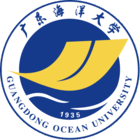详细信息
Evaluating Atmospheric Correction Methods for Sentinel-2 in Low-to-High-Turbidity Chinese Coastal Waters ( SCI-EXPANDED收录 EI收录) 被引量:6
文献类型:期刊文献
英文题名:Evaluating Atmospheric Correction Methods for Sentinel-2 in Low-to-High-Turbidity Chinese Coastal Waters
作者:Zhang, Shuyi[1];Wang, Difeng[1];Gong, Fang[1];Xu, Yuzhuang[1];He, Xianqiang[1,2];Zhang, Xuan[1];Fu, Dongyang[3]
机构:[1]Minist Nat Resources, Inst Oceanog 2, State Key Lab Satellite Ocean Environm Dynam, Hangzhou 310012, Peoples R China;[2]Donghai Lab, Zhoushan 316021, Peoples R China;[3]Guangdong Ocean Univ, Coll Elect & Informat Engn, Zhanjiang 524088, Peoples R China
年份:2023
卷号:15
期号:9
外文期刊名:REMOTE SENSING
收录:SCI-EXPANDED(收录号:WOS:000987728500001)、、EI(收录号:20232014107292)、Scopus(收录号:2-s2.0-85159335700)、WOS
基金:This research was funded by the National Key R&D Program of China under Grant Nos. 2018YFB0505005 and 2017YFC1405300, the Key Research and Development Plan of Zhejiang Province under contract no. 2017C03037, and the National Natural Science Foundation of China under contract no. 41476157.
语种:英文
外文关键词:ocean color; atmospheric correction; remote sensing reflectance; Sentinel-2
外文摘要:Inaccuracies in the atmospheric correction (AC) of data on coastal waters significantly limit the ability to quantify the parameters of water quality. Many studies have compared the effects of the atmospheric correction of data provided by the Sentinel-2 satellites, but few have investigated this issue for coastal waters in China owing to a limited amount of in situ spectral data. The authors of this study compared four processors for the atmospheric correction of data provided by Sentinel-2-the Atmospheric Correction for OLI 'lite'(ACOLITE), Sea-viewing Wide Field-of-view Sensor (SeaWiFS) Data Analysis System (SeaDAS), Polynomial-based algorithm applied to MERIS (POLYMER), and Case 2 Regional Coast Colour (C2RCC)-to identify the most suitable one for water bodies with different turbidities along the coast of China. We tested the algorithms used in these processors for turbid waters and compared the resulting inversion of the remote sensing reflectance (Rrs) using in situ reflectance data from three stations with varying levels of coastal turbidity (HTYZ, DONG'OU, and MUPING). All processors significantly underestimated the results on data from the HTYZ station, which is located along waters with high turbidity, with the SeaDAS delivering the best performance, with an average band RMSE of 0.0146 and an average MAPE of 29.80%. It was followed by ACOLITE, with an average band RMSE of 0.0213 and an average MAPE of 43.43%. The performance of two AC algorithms used in ACOLITE, dark spectrum fitting (DSF) and exponential extrapolation (EXP), was also evaluated by comparing their results with in situ measurements at the HTYZ site. The ACOLITE-EXP algorithm delivered a slight improvement in results for the blue band compared with the DSF algorithm in highly turbid water, but led to no significant improvement in the green and red bands. C2RCC delivered the best performance on data from the DONG'OU station, which is located along water with medium turbidity, and from the MUPING station (water with low turbidity), with values of the MAPE of 18.58% and 28.41%, respectively.
参考文献:
![]() 正在载入数据...
正在载入数据...


